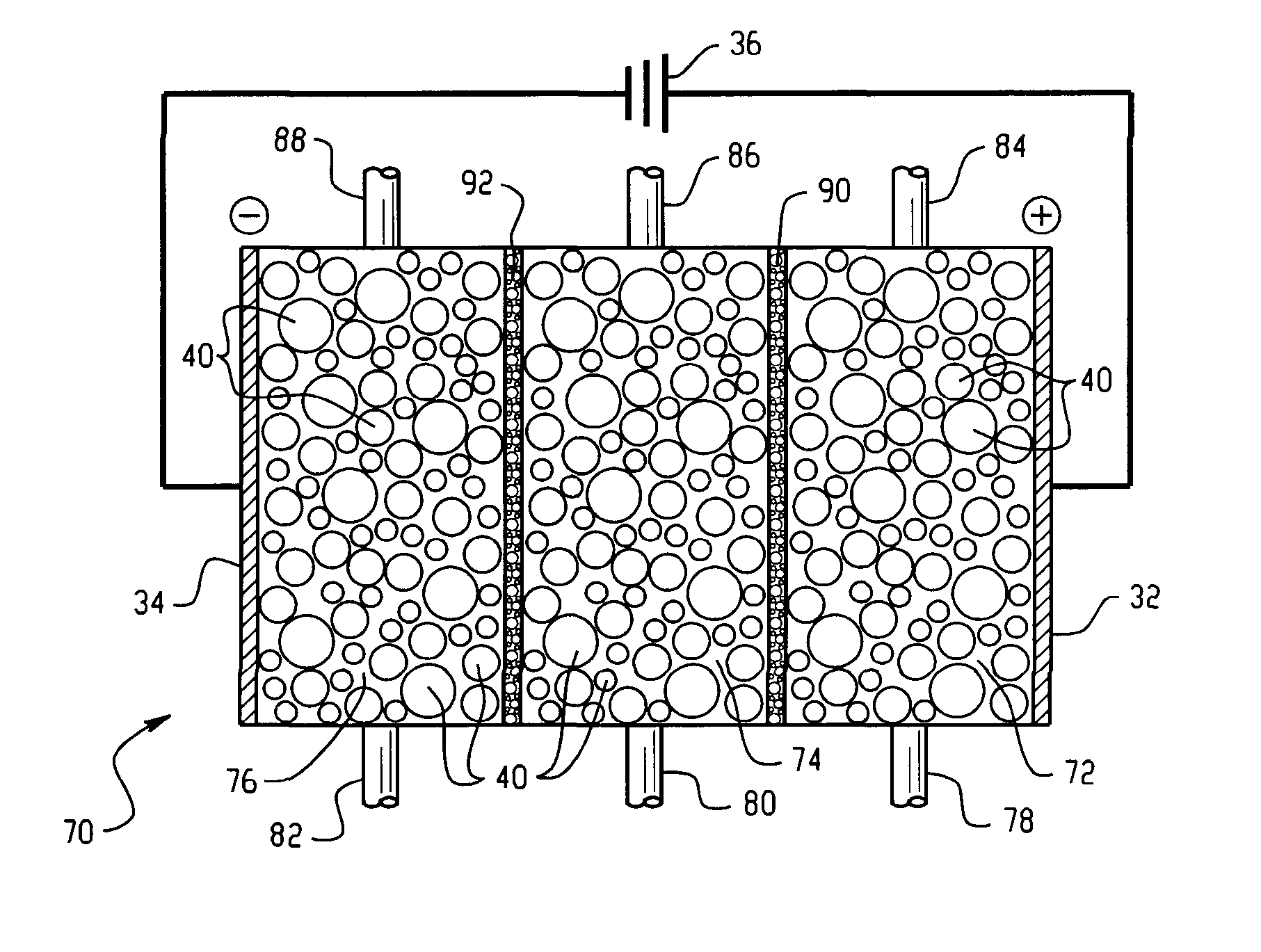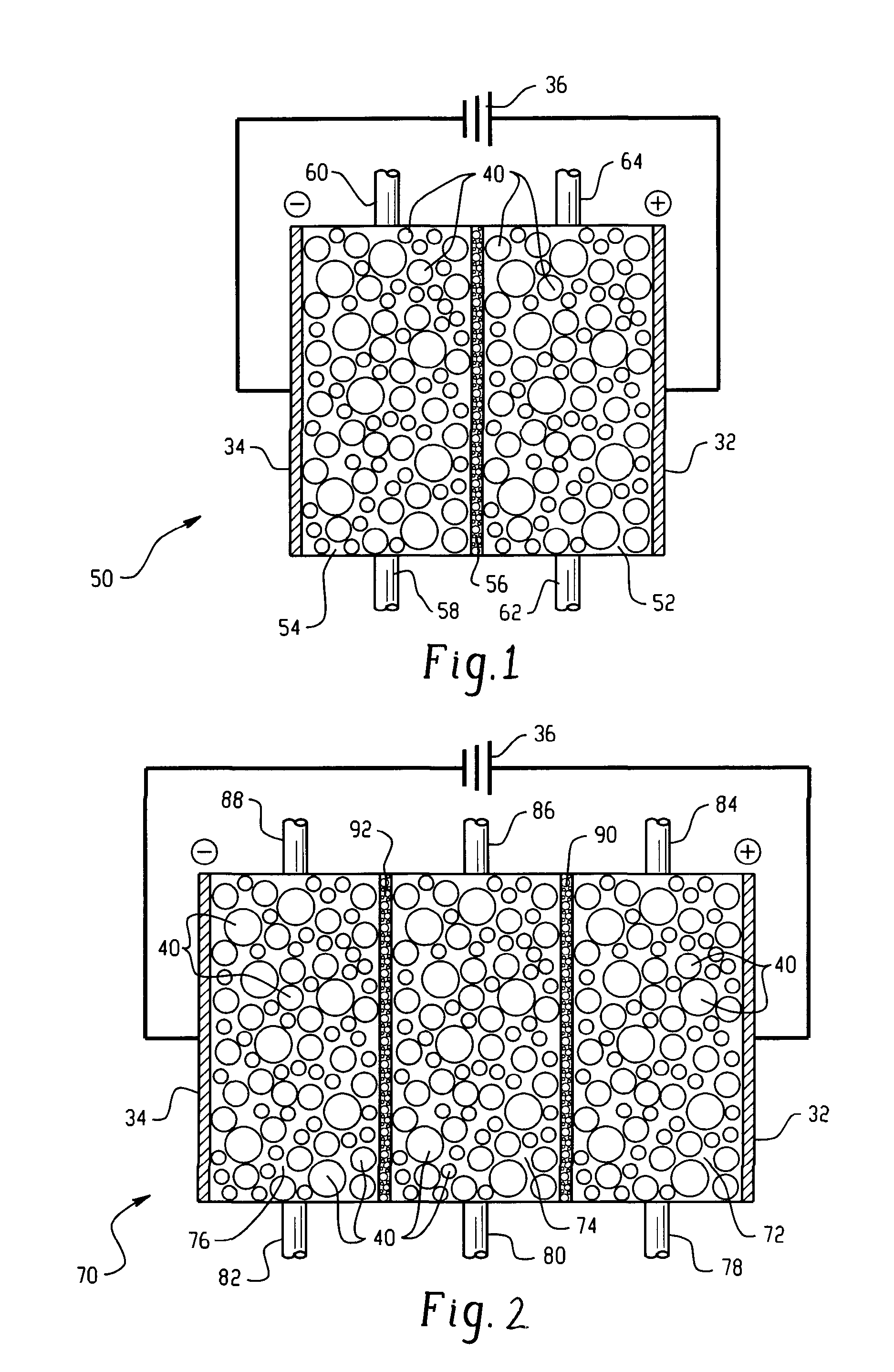Electrolytic process for generating chlorine dioxide
a technology of electrolysis and chlorine dioxide, applied in the field of electrochemical methods, can solve the problems of difficult control of the generation of undesirable species, difficult control of chlorine dioxide instability and hazardous, and the disadvantage of known catalytic processes being greatly deactivated within a matter of days
- Summary
- Abstract
- Description
- Claims
- Application Information
AI Technical Summary
Benefits of technology
Problems solved by technology
Method used
Image
Examples
example 1
[0067] In this Example, a system for generating chlorine dioxide was configured as described in FIG. 1.
[0068] The electrolytic reactor was configured as shown and described in FIG. 1. Each compartment employed a length of 25.4 centimeters (cm) with a width of 5.08 cm. The thickness of the central compartment was 1.27 cm and the thicknesses of the electrode compartments were 0.64 cm. The electrode and central compartments of the electrolytic reactor contained SK116 cation exchange resin commercially available from Mitsubishi Chemical. A transverse DC electric field was supplied by an external power supply to the electrodes. Sodium chloride at a concentration of about 350 mg / L was fed to the anode compartment at a flow rate of about 200 milliliters per minute. The effluent from the anode compartment was coupled to the inlet of the central compartment; thereby diluting a 25-weight percent sodium chlorite feed solution such that the final concentration of sodium chlorite was about 1,00...
PUM
| Property | Measurement | Unit |
|---|---|---|
| w/w | aaaaa | aaaaa |
| thick | aaaaa | aaaaa |
| thick | aaaaa | aaaaa |
Abstract
Description
Claims
Application Information
 Login to View More
Login to View More - R&D
- Intellectual Property
- Life Sciences
- Materials
- Tech Scout
- Unparalleled Data Quality
- Higher Quality Content
- 60% Fewer Hallucinations
Browse by: Latest US Patents, China's latest patents, Technical Efficacy Thesaurus, Application Domain, Technology Topic, Popular Technical Reports.
© 2025 PatSnap. All rights reserved.Legal|Privacy policy|Modern Slavery Act Transparency Statement|Sitemap|About US| Contact US: help@patsnap.com



